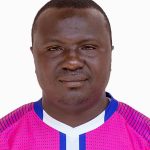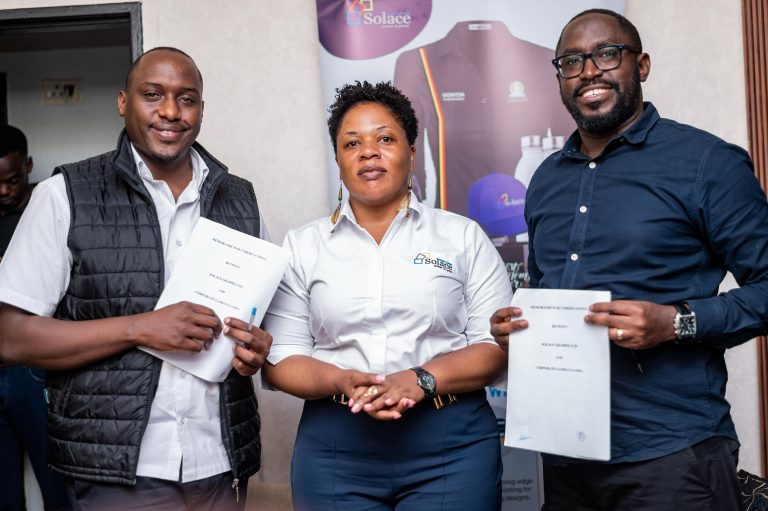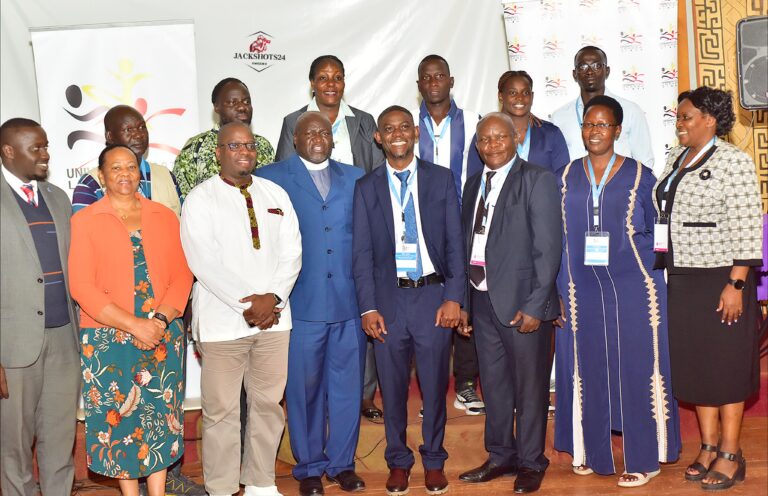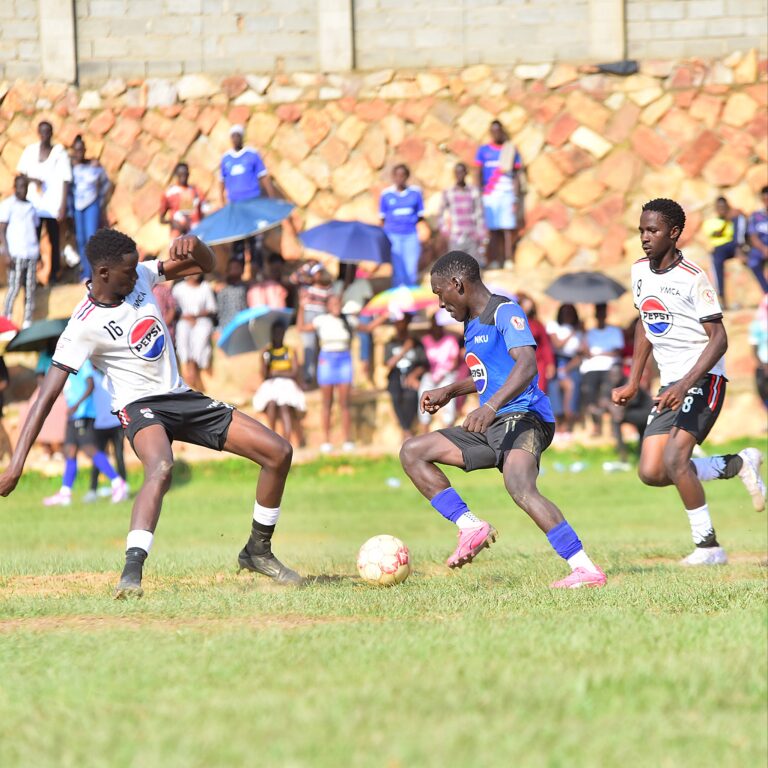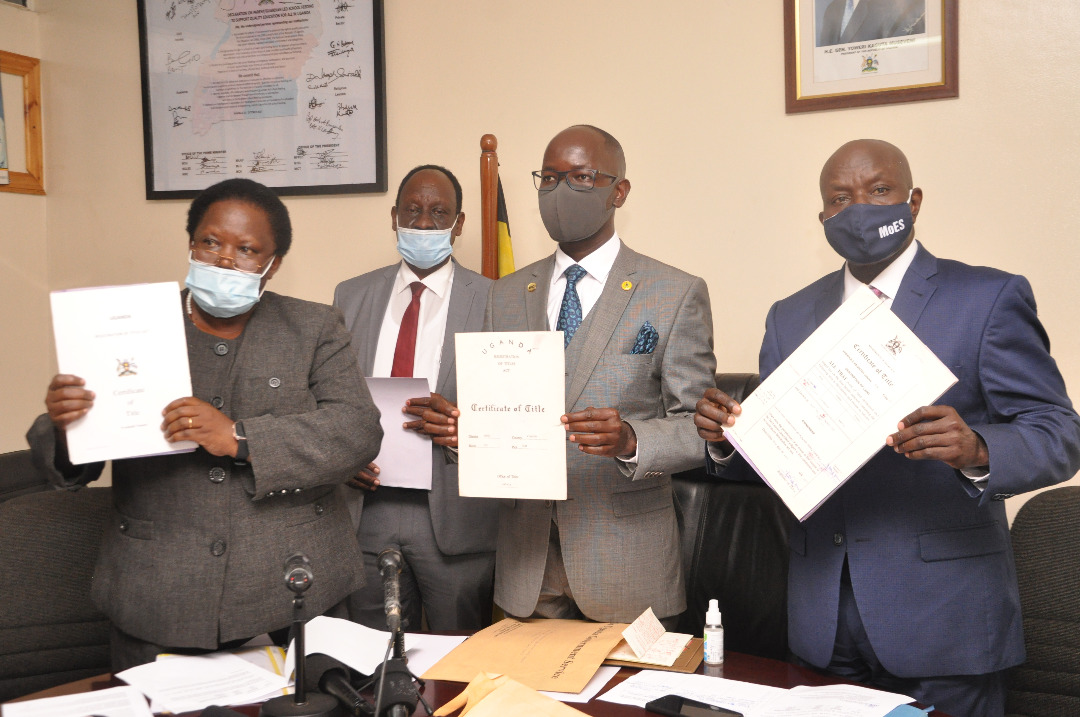
Mandela National Stadium Acquires Proof of Ownership
With over 200 encroachers reported to have occupied the land illegally, Mandela National Stadium, Namboole has today received three land tittles from the ministry of lands housing and urban planning.
The development came after an inter-ministerial meeting held in July 2019 which resolved to transfer the tittles to Mandela National Stadium limited, a liability Public company.
On receiving the tittles, the state minister for sports Honorable Hanson Obua hailed the move and confirmed that Namboole’s biggest challenge is solved now.
“Today we confirm Namboole’s biggest challenge being solved and now Mandela National Stadium limited is at liberty to start engaging development partners”, said Obua
History of the facility
Built with US$36 million Grant from the People’s Republic of China (PRC), originally called Namboole Stadium, a name derived from the name of the hill it is located, It is now officially called Mandela National Stadium, named after the former South African president, Nelson Mandela.
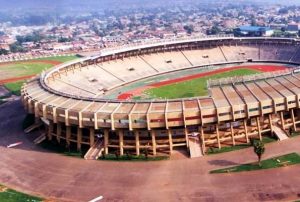
At the start of Friday, 1st April 2020 morning, reports continuously circulated around different social media platforms that Uganda’s National Stadium, located in Wakiso District, was disqualified from hosting international football matches having failed to meet minimum standards.
Background of its misery
Joyously opened in 1997 with a concert by the legendary music icon Lucky Dube, a reggae artist from South Africa, the stadium standards nosedived over the years and the ramshackle of facility has given all due wages.
Reports also had it that, only a 15,000 seating capacity St Mary’s Stadium Kitende, the home of gigantic rapid growing football power Vipers SC, a facility own by an individual (former FUFA president Lawrence Mulindwa) is the only qualified stadium to host international games in Uganda.
The privatization and private-public management modality could be the cause of the intended ramshackle of the facility.
It should be remembered the stadium was refurbished in 2010-11, still with a US$2.8 million grant from the Chinese Republic government.
In 2015, a Committee of Uganda’s Parliament reported that the stadium was on the verge of financial collapse, claiming that the stadium had suffered from more than a decade of “mismanagement and wanton abuse” and incurred losses totaling UGX:3.6.
The committee also noted that government’s policy of running the stadium profitably in a private-public partnership arrangement was challenge to it’s sustainability.
In 2019, the Parliamentary Accounts Committee (PAC) ordered a forensic audit into Mandela National Stadium management, after queries were raised on the UGX 875 million domestic arrears.
The directive was issued by PAC Chairperson, Nandala Mafabi while meeting with officials from the Ministry of Finance who were summoned by the Committee to respond to audit queries raised in the June 2018 audit.
The multi-purpose Stadium is mainly used for soccer matches, although other sports such as athletics, netball, handball, tennis, Volleyball basketball among others are also practiced on the penuriously managed government facility.
After investigation, Hon. Joseph Ssewungu clearly stated that all money collected from the facility simply goes into the pockets of an individual.
Facts
Home to Uganda’s National football team (The Uganda Cranes), Mandela National Stadium has a seating capacity of 45,202.
However, despite the fact that the it’s in a sorry state, the Namboole shelving news must be a story behind another with interest to defend a previously proposed Private-Public Partnership management modality or the famous privatization sense that has sent Uganda to hell of problems.
After the proposal for a private-public partnership to superintend the facility, innumerable loaded and connected individuals started the hunt to come by and control Namboole.
Threat
The expeditious disappearance of playing fields in Uganda between the early 90s to date poses a very big threat to talent growth and the country is likely to have a cripple future.
Gone are days when Schools, currently the Uganda’s best sports breeding areas conferred a playground as one of the requirements to off the latch of any school.
However, matters were later handled in an eyeball to eyeball with manner, leading to the expeditious disappearance of playing fields.
Kitante, Kololo, Buganda road, Nakivobo Settlement playgrounds land vanished and others lost part of their land in the move to erect housing and none is relocated.
The memorable War Memorial Stadium, Nakivobo, currently undergoing an exterior encroachment in the name of development is the last punch in receipt of the football industry.
Lugogo Playgrounds, Kyagwe Road, among others are notable great losses to the industry.
The lack of a well plonked National Sports Policy, cripple government investment into sports stand out to be a big challenge to sports infrastructure.
Regional Stadiums like Buhinga, Pece, Mbale Municipal, Boma, Lira, Kakyeka among other are currently under a very sorry state and need vindication.



